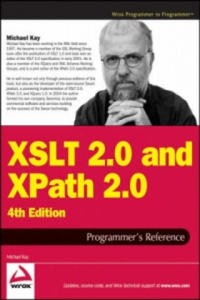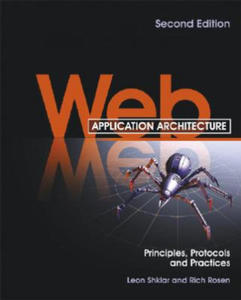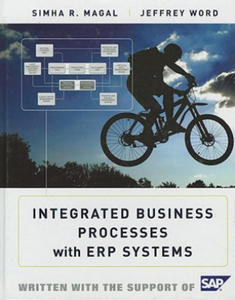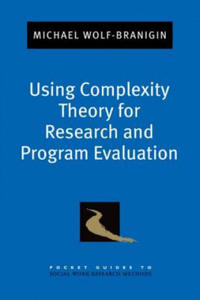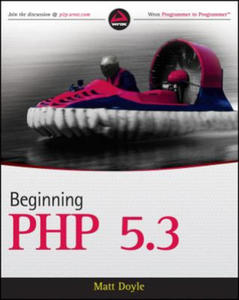libristo associated concepts agency inc
- znaleziono 40 produkty w 2 sklepach
Anthropology and Social Theory Duke University Press
Książki / Literatura obcojęzyczna
In "Anthropology and Social Theory", the award-winning anthropologist Sherry B. Ortner draws on her longstanding interest in theories of cultural practice to rethink key concepts of culture, agency, and subjectivity for the social sciences of the twenty-first century. The seven theoretical and interpretive essays in this volume each advocate reconfiguring, rather than abandoning, the concept of culture. Similarly, they all suggest that a theory which depends on the interested action of social beings - specifically practice theory, associated especially with the work of Pierre Bourdieu - requires a more developed notion of human agency and a richer conception of human subjectivity. Ortner shows how social theory must both build upon and move beyond classic practice theory in order to understand the contemporary world. Some of the essays reflect explicitly on theoretical concerns: the relationship between agency and power, the possibility of producing an anthropology of subjectivity, and the problematic quality of ethnographic studies of resistance. Others are ethnographic studies that put into practice Ortner's theoretical framework.In these, she investigates aspects of social class, looking at the relationship between race and middle-class identity in the United States, the often invisible nature of class as a cultural identity and as an analytical category in social inquiry, and the role that public culture and media played in the creation of the class anxieties of Generation X. Written with Ortner's characteristic lucidity, these essays constitute a major statement about the future of social theory from one of the leading anthropologists of our time.
Sklep: Libristo.pl
Intermediate Accounting With Coach CD NetTutor PowerWeb McGraw-Hill
Inne 1
Intermediate Accounting, 3e, by Spiceland/Sepe/Tomassini will gain support in traditional and technology-driven accounting departments, especially those looking for a more concise, decision-making text that reinforces challenging concepts via CD-ROM. The revision of this text is based around a "Learning System." The revision of this "Learning System" was built on improving the clarity of the chapters, emphasizing more decision-making in order to prepare students for the changes taking place on the CPA exam, acknowledging the diversity of students and their learning styles by creating supplemental materials to assure the success of every student, and creating a consistent text and supplemental package for both students and instructor's giving us the best possible intermediate text on the market. Returning to the Third edition is the award winning "Coach" CD-ROM. The Coach CD-ROM is a multimedia product integrating audio and video clips, animated illustrations, cases, and alternative reading material that helps students comprehend some of the more difficult topics associated with intermediate accounting. Designed specifically for the Spiceland text, instructors and students will find these learning tools placed strategically throughout the text. This is the most comprehensive Learning System in Intermediate Accounting. At only 1120 pages (300 pages less than the average intermediate accounting text), Spiceland/S/T has not sacrificed content for pages. Instead, the authors have created a very flexible text with a student friendly writing style that focuses on explaining not just how to apply a procedure, but why it's applied. GradeSummit(TM) is a dynamic self-assessment and exam preparation service for students and instructors. Detailed diagnostic analysis of strengths and weaknesses enables efficient and effective study for students and effortless information for instructors. Find out more at www.gradesummit.com.|Reorganization of Chapters 3, 4, and 5. Based on extensive market feedback, the authors rearranged these chapters so that the basic financial statements are presented contiguously in Chapters 3 and 4. Consequently, the balance sheet is now covered before presenting the income measurement material.|Chapter 4 - Early coverage of Earnings Management/Earnings Quality. Part "A" of this chapter, the income statement, has been restructured by framing the discussion of income statement presentation within the context of earnings quality/earnings management. As one of the HOTTEST topics in the news today, Earnings Quality refers to the ability of reported earnings (income) to predict a company's future earnings. Financial analysts evaluate a company's earnings quality by attempting to separate a company's transitory earnings effects from its permanent earnings. This analysis is critical to investment decisions.|Update on Pronouncement Drafts FAS No. 132 (revised 2003) - Employers' Disclosures about Pensions and Other Postretirement Benefits-an amendment of FASB Statements No. 87, 88, and 106 FAS No. 150, Accounting for Financial Instruments with Characteristics of both Liabilities and Equity Accounting Changes and Error Corrections -a replacement of APB Opinion 20 Exchanges of Productive Assets - an amendment of APB Opinion No. 29. Accounting for Stock-Based Compensation: A Comparison of FASB Statement No. 123, Accounting for Stock-Based Compensation, and its related interpretations. Expanded coverage of the Sarbanes Oxley Act in Chapter 1|CPA Review IntegrationIn 2004 McGraw-Hill/Irwin will provide you and your students with a true CPA Exam experience By exposing students to those skills now necessary to succeed both in their careers and on the computerized CPA Exam - Research, Analysis, Judgment, Understanding and Communication - your students will now be exposed to these requirements in their intermediate accounting course through our new CPA Review simulations. Several simulations tied to the text will be available on the bookĹźs website. |Decision Makers' Perspective - sections added to various chapters throughout the text to help students learn how to apply the knowledge they learn in class to the real world after graduation. Earnings Management topics are often revisited in these sections of the text. This text addresses the issues of how creditors use information about accounts receivables and inventories, determine which information is useful to investors, and why managers choose a particular accounting method over an allowable alternative. By the end of this course, students will be able to use accounting information to make decisions, understand financial reporting issues, and most importantly, critically evaluate reporting alternatives.|Updated real-world examples featuring a variety of companies such as Microsoft, Ford, and Gap, Inc. help students understand theoretical concepts by studying the decisions made by progressive companies.|Updated FASB Pronouncements - 130, 131, 132, 133, 137, 141-146 all incorporated throughout the text with material detailing the impacts of these pronouncements.|Revenue Recognition - Revenue recognition has become one of the hottest financial reporting issues. The most frequently cited issue in federal class action litigation is improper revenue recognition. Complex business transactions, particularly for high technology companies, make revenue recognition a difficult task, one that needs to be thoroughly understood by students.|Chapter 14, Bonds and Long-Term Notes, has been reorganized to create greater flexibility in the choice of topics to be covered. 3 Parts: Postretirement Benefits Other than Pensions, Stock-Based Compensation Plans, and Other Compensation Prior to Retirement.|Coverage of accounting errors expanded in Chapter 22 - Using Enron's error correction experience as backdrop. These topics will show the relevance of accounting to students.|Updated Computerized Test Bank - Each chapter of the TB has a planning grid that classifies each question according to the primary learning objective and the level of learning that it tests. Learning levels, based on a form of Bloom's educational taxonomy, divides questions as follows: Level One - Knows terms & facts. Level Two - Understands Principles and Concepts. Level Three - Applies Principles and Concepts. Many questions have been revised or updated from the 2e test bank, several redundant ones have been eliminated and many new ones have been included. The new questions emphasize more critical thinking and increased emphasis on interpreting information from real world financial statements and disclosures.|Online Learning Center- The OLC is a dynamic website providing students with added material that traditionally has been available at an additional cost. The Spiceland OLC includes quizzes, practice sets, articles, Excel Templates, PPT Slides, Electronic Cases, Check Figures, FASB Pronouncement Summaries, links to Relevant News and References, and Flash Cards. There are also 60 Real-Time, Real-World Electronic cases. Each case has solutions and links to other websites. The OLC is free with the purchase of a new text. (www.mhhe.com/spiceland3e)|Expanded coverage of comprehensive income. Comprehensive income, as covered in the first and second editions, will now include real-world disclosure examples and presentations.|Coach CD-ROM - The Coach CD-ROM is an interactive CD-ROM that is fully integrated throughout the text, helping students understand some of the more difficult topics surrounding Intermediate Accounting. This CD-ROM includes audio & video clips to help visual learners comprehend difficult topics in an environment that is more suitable to their learning needs. There are also animated illustrations, electronic cases, review exercises, and additional journal readings.|Author-written supplements - The Spiceland author team writes all primary supplements to ensure a perfect fit between the text and supporting materials.|Conceptual Emphasis - Spiceland is more conceptual in how it successfully explains not just how to account for something, but why you account for it in a particular manner.|Flexibility - The author team has organized the chapters modularly so basic concepts are covered early in the chapter, while more difficult concepts can be studied later, or skipped completely. With other encyclopedic texts, this can be very difficult for instructors to accomplish.|Chapter Opening Financial Reporting Cases - Each chapter opens with a Financial Reporting Case that places the students in the role of the decision-maker. These cases help students understand why and how the material covered in a given chapter is applied in business. Questions relating to these cases are placed appropriately throughout the chapter where the learned concepts can be applied. Solutions to these questions are located in the End-of-Chapter material.|Ethical Dilemmas - Ethical boxes are integrated throughout the text and are intended to create an awareness of accounting issues with ethical ramifications. This timely information is great for classroom discussions and ask students to consider situations dealing with fraud, accounting for contingencies, and post-retirement pension plans.|Global Perspectives - International boxes integrated throughout the text to give students a sense of how accounting is use in other countries. Students will get some insight into how income tax regulations are handled in other countries, how investments are reported, and uniformity of accounting standards in a global marketplace.|Additional Consideration Boxes provide students with more detail on selected topics such as understanding ratios, LIFO/FIFO, and goodwill.|Broaden Your Perspective Cases - An integral part of each chapter, these cases prepare students for the New Uniform CPA exam by helping them develop these four critical skills: research, analysis, judgment, and communication. These cases allow students to apply the knowledge they are gaining in the course.|Concept Review Exercises w/Solutions - Reinforces the understanding of chapter material, and allows students to apply concepts and procedures learned in earlier chapters prior to their homework assignment. Some chapters will discuss more than one distinct topic, and in so doing, a concept review exercise will immediately follow.|McGraw-HillĹźs Knowledge Gateway - The Complete Resource for Teaching Online Courses. McGraw-Hill/Irwin, in partnership with Eduprise, is proud to bring this unique service to instructors. This comprehensive Website contains a wealth of information for any professor interested in teaching online. Level one is available to any instructor browsing our Website. Level two is reserved for McGraw-Hill customers and contains access to free technical and instructional design assistance. For more details, visit http://mhhe.eduprise.com/home.nsf|PageOut is McGraw-HillĹźs unique point-and click course Website tool, enabling you to create a full-featured, professional quality course Website without knowing HTML coding. With PageOut you can post your syllabus online, assign McGraw-Hill Online Learning Center or eBook content, add links to important off-site resources, and maintain student results in the online grade book. You can send class announcements, copy your course site to share with colleagues, and upload original files. PageOut is free for every McGraw-Hill/Irwin user and, if youĹźre short on time, we even have a team ready to help you create your site!|You can customize this text with McGraw-Hill/Primis Online. A digital database offers you the flexibility to customize your course including material from the largest online collection of textbooks, readings, and cases. Primis leads the way in customized eBooks with hundreds of titles available at prices that save your students over 20% off bookstore prices. Additional information is available at 800-228-0634.|PowerWeb. This online reservoir of discipline-specific news articles and essays offer a great way to keep your course current, while complementing textbook concepts with real-world applications. Articles and essays from leading periodicals and niche publications in specific disciplines are reviewed by professors like you to ensure fruitful search results every time. PowerWeb also offers current news, weekly updates with assessment, interactive exercises, Web research guide, study tips, and much more! http://www.dushkin.com/powerweb.|BusinessWeek Edition. Your students can subscribe to 15 weeks of Business Week for a specially priced rate of $8.25 in addition to the price of the text. Students will receive a pass code card shrink-wrapped with their new text. The card directs students to a Website where they enter the code and then gain access to BusinessWeekĹźs registration page to enter address info and set up their print and online subscription as well. |Wall Street Journal Edition. Your students can subscribe to the Wall Street Journal for 15 weeks at a specially priced rate of $20.00 in addition to the price of the text. Students will receive a "How To Use the WSJ" handbook plus a pass code card shrink-wrapped with the text. The card directs students to a Website where they enter the code and then gain access to the WSJ registration page to enter address info and set up their print and online subscription, and also set up their subscription to Dow Jones Interactive online for the span of the 15-week period. |Standard & PoorĹźs Educational Version of Market Insight. McGraw-Hill/Irwin is proud to partner with Standard & PoorĹźs to offer access to the Educational Version of Standard & PoorĹźs Market Insight(c). This rich online resource provides six years of financial data for over 370 top companies. The password-protected Website is the perfect way to bring real data into todayĹźs classroom. This is free with selected McGraw-Hill titles, and is available for an extra $5 with additional titles. Contact your rep for more information or visit www.mhhe.com/edumarketinsight.
Sklep: Albertus.pl
Hispanic Marketing Butterworth Heinemann
Biznes
This book is about strategic thinking in Hispanic marketing. The size and economic importance of the Hispanic market in the US are attracting enormous attention. The buying power of the US Hispanic market is now larger than the GDP of the entire country of Mexico, and it is the second largest Hispanic market in the world. Businesses and institutions have launched major initiatives to reach this important segment. Yet, the number of qualified individuals who understand the market is small; and many of those already catering to the market still struggle to learn about its intricacies. This book is a cultural approach to Hispanic marketing. Each of the chapters describes and explains the cultural principles of Latino marketing. Recent case studies help marketers relate to the material pragmatically. The book integrates concepts and practical examples and provides critical guidance to discern between alternative courses of action. This book is not about repeating well-known statistics, but about the Hispanic market as a cultural target. It takes a profound look at the values, beliefs, and emotions of US Hispanics, which impact consumer behaviour. Each of the chapters has been the subject of public presentations and lectures to marketing professionals. It is their positive reactions as well as the authors
Sklep: Albertus.pl
Electric Power Systems - A Conceptual Introduction John Wiley & Sons Inc
Książki / Literatura obcojęzyczna
A clear explanation of the technology for producing and delivering electricity Electric Power Systems explains and illustrates how the electric grid works in a clear, straightforward style that makes highly technical material accessible. It begins with a thorough discussion of the underlying physical concepts of electricity, circuits, and complex power that serves as a foundation for more advanced material. Readers are then introduced to the main components of electric power systems, including generators, motors and other appliances, and transmission and distribution equipment such as power lines, transformers, and circuit breakers. The author explains how a whole power system is managed and coordinated, analyzed mathematically, and kept stable and reliable. Recognizing the economic and environmental implications of electric energy production and public concern over disruptions of service, this book exposes the challenges of producing and delivering electricity to help inform public policy decisions.Its discussions of complex concepts such as reactive power balance, load flow, and stability analysis, for example, offer deep insight into the complexity of electric grid operation and demonstrate how and why physics constrains economics and politics. Although this survival guide includes mathematical equations and formulas, it discusses their meaning in plain English and does not assume any prior familiarity with particular notations or technical jargon. Additional features include: A glossary of symbols, units, abbreviations, and acronyms Illustrations that help readers visualize processes and better understand complex concepts Detailed analysis of a case study, including a Web reference to the case, enabling readers to test the consequences of manipulating various parameters With its clear discussion of how electric grids work, Electric Power Systems is appropriate for a broad readership of professionals, undergraduate and graduate students, government agency managers, environmental advocates, and consumers.
Sklep: Libristo.pl
XSLT 2.0 and XPath 2.0 Programmer's Reference 4e John Wiley & Sons Inc
Książki / Literatura obcojęzyczna
This book is primarily a practical reference book for professional XSLT developers. It assumes no previous knowledge of the language, and many developers have used it as their first introduction to XSLT; however, it is not structured as a tutorial, and there are other books on XSLT that provide a gentler approach for beginners. The book does assume a basic knowledge of XML, HTML, and the architecture of the Web, and it is written for experienced programmers. There's no assumption that you know any particular language such as Java or Visual Basic, just that you recognize the concepts that all programming languages have in common. The book is suitable both for XSLT 1.0 users upgrading to XSLT 2.0, and for newcomers to XSLT. The book is also equally suitable whether you work in the Java or .NET world. As befits a reference book, a key aim is that the coverage should be comprehensive and authoritative. It is designed to give you all the details, not just an overview of the 20 percent of the language that most people use 80 percent of the time.It's designed so that you will keep coming back to the book whenever you encounter new and challenging programming tasks, not as a book that you skim quickly and then leave on the shelf. If you like detail, you will enjoy this book; if not, you probably won't. But as well as giving the detail, this book aims to explain the concepts, in some depth. It's therefore a book for people who not only want to use the language but who also want to understand it at a deep level. The book aims to tell you everything you need to know about the XSLT 2.0 language. It gives equal weight to the things that are new in XSLT 2.0 and the things that were already present in version 1.0. The book is about the language, not about specific products. However, there are appendices about Saxon (the author's own implementation of XSLT 2.0), about the Altova XSLT 2.0 implementation, and about the Java and Microsoft APIs for controlling XSLT transformations, which will no doubt be upgraded to handle XSLT 2.0 as well as 1.0. A third XSLT 2.0 processor, Gestalt, was released shortly before the book went to press, too late to describe it in any detail. But the experience of XSLT 1.0 is that there has been a very high level of interoperability between different XSLT processors, and if you can use one of them, then you can use them all.In the previous edition we split XSLT 2.0 and XPath 2.0 into separate volumes. The idea was that some readers might be interested in XPath alone. However, many bought the XSLT 2.0 book without its XPath companion and were left confused as a result; so this time, the material is back together. The XPath reference information is in self-contained chapters, so it should still be accessible when you use XPath in contexts other than XSLT. The book does not cover XSL Formatting Objects, a big subject in its own right. Nor does it cover XML Schemas in any detail. If you want to use these important technologies in conjunction with XSLT, there are other books that do them justice. This book contains twenty chapters and eight appendixes (the last of which is a glossary) organized into four parts. The following section outlines what you can find in each part, chapter, and appendix. Part I: Foundations: The first part of the book covers essential concepts. You should read these before you start coding.If you ignore this advice, as most people do, then you read them when you get to that trough of despair when you find it impossible to make the language do anything but the most trivial tasks. XSLT is different from other languages, and to make it work for you, you need to understand how it was designed to be used. Chapter 1: XSLT in Context: This chapter explains how XSLT fits into the big picture: how the language came into being and how it sits alongside other technologies. It also has a few simple coding examples to keep you alert. Chapter 2: The XSLT Processing Model: This is about the architecture of an XSLT processor: the inputs, the outputs, and the data model. Understanding the data model is perhaps the most important thing that distinguishes an XSLT expert from an amateur; it may seem like information that you can't use immediately, but it's knowledge that will stop you making a lot of stupid mistakes. Chapter 3: Stylesheet Structure: XSLT development is about writing stylesheets, and this chapter takes a bird's eye view of what stylesheets look like.It explains the key concepts of rule-based programming using templates, and explains how to undertake programming-in-the-large by structuring your application using modules and pipelines. Chapter 4: Stylesheets and Schemas: A key innovation in XSLT 2.0 is that stylesheets can take advantage of knowledge about the structure of your input and output documents, provided in the form of an XML Schema. This chapter provides a quick overview of XML Schema to describe its impact on XSLT development. Not everyone uses schemas, and you can skip this chapter if you fall into that category. Chapter 5: The Type System: XPath 2.0 and XSLT 2.0 offer strong typing as an alternative to the weak typing approach of the 1.0 languages. This means that you can declare the types of your variables, functions, and parameters, and use this information to get early warning of programming errors. This chapter explains the data types available and the mechanisms for creating user-defined types. Part II: XSLT and XPath Reference: This section of the book contains reference material, organized in the hope that you can easily find what you need when you need it.It's not designed for sequential reading, though you might well want to leaf through the pages to discover what's there. Chapter 6: XSLT Elements: This monster chapter lists all the XSLT elements you can use in a stylesheet, in alphabetical order, giving detailed rules for the syntax and semantics of each element, advice on usage, and examples. This is probably the part of the book you will use most frequently as you become an expert XSLT user. It's a "no stone unturned" approach, based on the belief that as a professional developer you need to know what happens when the going gets tough, not just when the wind is in your direction. Chapter 7: XPath Fundamentals: This chapter explains the basics of XPath: the low-level constructs such as literals, variables, and function calls. It also explains the context rules, which describe how the evaluation of XPath expressions depends on the XSLT processing context in which they appear. Chapter 8: XPath: Operators on Items: XPath offers the usual range of operators for performing arithmetic, boolean comparison, and the like.However, these don't always behave exactly as you would expect, so it's worth reading this chapter to see what's available and how it differs from the last language that you used. Chapter 9: XPath: Path Expressions: Path expressions are what make XPath special; they enable you to navigate around the structure of an XML document. This chapter explains the syntax of path expressions, the 13 axes that you can use to locate the nodes that you need, and associated operators such as union, intersection, and difference. Chapter 10: XPath: Sequence Expressions: Unlike XPath 1.0, in version 2.0 all values are sequences (singletons are just a special case). Some of the most important operators in XPath 2.0 are those that manipulate sequences, notably the "for" expression, which translates one sequence into another by applying a mapping. Chapter 11: XPath: Type Expressions: The type system was explained in Chapter 5; this chapter explains the operations that you can use to take advantage of types. This includes the "cast" operation which is used to convert values from one type to another.A big part of this chapter is devoted to the detailed rules for how these conversions are done.Chapter 12: XSLT Patterns: This chapter returns from XPath to a subject that's specific to XSLT. Patterns are used to define template rules, the essence of XSLT's rule-based programming approach. The reason for explaining them now is that the syntax and semantics of patterns depends strongly on the corresponding rules for XPath expressions. Chapter 13: The Function Library: XPath 2.0 includes a library of functions that can be called from any XPath expression; XSLT 2.0 extends this with some additional functions that are available only when XPath is used within XSLT. The library has grown immensely since XPath 1.0. This chapter provides a single alphabetical reference for all these functions. Chapter 14: Regular Expressions: Processing of text is an area where XSLT 2.0 and XPath 2.0 are much more powerful than version 1.0, and this is largely through the use of constructs that exploit regular expressions. If you're familiar with regexes from languages such as Perl, this chapter tells you how XPath regular expressions differ. If you're new to the subject, it explains it from first principles.Chapter 15: Serialization: Serialization in XSLT means the ability to generate a textual XML document from the tree structure that's manipulated by a stylesheet. This isn't part of XSLT processing proper, so (following W3C's lead) it's separated it into its own chapter. You can control serialization from the stylesheet using an declaration, but many products also allow you to control it directly via an API. Part III: Exploitation: The final section of the book is advice and guidance on how to take advantage of XSLT to write real applications. It's intended to make you not just a competent XSLT coder, but a competent designer too. The best way of learning is by studying the work of others, so the emphasis here is on practical case studies. Chapter 16: Extensibility: This chapter describes the "hooks" provided in the XSLT specification to allow vendors and users to plug in extra functionality. The way this works will vary from one implementation to another, so we can't cover all possibilities, but one important aspect that the chapter does cover is how to use such extensions and still keep your code portable.Chapter 17: Stylesheet Design Patterns: This chapter explores a number of design and coding patterns for XSLT programming, starting with the simplest "fill-in-the-blanks" stylesheet, and extending to the full use of recursive programming in the functional programming style, which is needed to tackle problems of any computational complexity. This provides an opportunity to explain the thinking behind functional programming and the change in mindset needed to take full advantage of this style of development. Chapter 18: Case Study: XMLSpec: XSLT is often used for rendering documents, so where better to look for a case study than the stylesheets used by the W3C to render the XML and XSLT specifications, and others in the same family, for display on the web? The resulting stylesheets are typical of those you will find in any publishing organization that uses XML to develop a series of documents with a compatible look-and-feel. Chapter 19: Case Study: A Family Tree: Displaying a family tree is another typical XSLT application.This example with semi-structured data-a mixture of fairly complex data and narrative text-that can be presented in many different ways for different audiences. It also shows how to tackle another typical XSLT problem, conversion of the data into XML from a legacy text-based format. As it happens, this uses nearly all the important new XSLT 2.0 features in one short stylesheet. But another aim of this chapter is to show a collection of stylesheets doing different jobs as part of a complete application. Chapter 20: Case Study: Knight's Tour: Finding a route around a chessboard where a knight visits every square without ever retracing its steps might sound a fairly esoteric application for XSLT, but it's a good way of showing how even the most complex of algorithms are within the capabilities of the language. You may not need to tackle this particular problem, but if you want to construct an SVG diagram showing progress against your project plan, then the problems won't be that dissimilar. Part IV: Appendices: A ppendix A: XPath 2.0 Syntax Summary: Collects the XPath grammar rules and operator precedences into one place for ease of reference.Appendix B: Error Codes: A list of all the error codes defined in the XSLT and XPath language specifications, with brief explanations to help you understand what's gone wrong. Appendix C: Backward Compatibility: The list of things you need to look out for when converting applications from XSLT 1.0. Appendix D: Microsoft XSLT Processors: Although the two Microsoft XSLT processors don't yet support XSLT 2.0, we thought many readers would find it useful to have a quick summary here of the main objects and methods used in their APIs. Appendix E: JAXP: the Java API for XML Processing: JAXP is an interface rather than a product. Again, it doesn't have explicit support yet for XSLT 2.0, but Java programmers will often be using it in XSLT 2.0 projects, so the book includes an overview of the classes and methods available. Appendix F: Saxon: At the time of writing Saxon (developed by the author of this book) provides the most comprehensive implementation of XSLT 2.0 and XPath 2.0, so its interfaces and extensions are covered in some detail. Appendix G: Altova: Altova, the developers of XML Spy, have an XSLT 2.0 processor that can be used either as part of the development environment or as a freestanding component.This appendix gives details of its interfaces. Appendix H: Glossary Note: CD-ROM/DVD and other supplementary materials are not included as part of eBook file.
Sklep: Libristo.pl
Irrigation Systems Engineering New India Publishing Agency
Książki / Literatura obcojęzyczna
It is designed to guide students from a basic knowledge of soil, mathematics, hydrologic and hydraulics to the state-of-the-art irrigation system design and management. Since major and medium irrigation projects are too costly and at the same time are not eco-friendly, the major thrust of research is now being imparted on low cost and easy to construct farm irrigation structures. The primary aim of the book is to design an optimum size small scale water harvesting structure which is the farm pond mostly used by the farmers in the farms. My goal is to present the principles and concepts of farm irrigation in a simple manner to maximize the students learning, understanding and motivation. The method and order of presentation have been carefully developed and classroom tested to make this book a useful and effective teaching tool. The book will not only be a helping tool to the students and teachers in agriculture and agricultural engineering but also to all the practicing engineers, agriculturists, soil conservationists and agricultural extension workers who deal directly or indirectly with water management and other associated farm development works. However, the book cannot be used for design of complex hydraulic structures including dams and reservoi The book contains 23 solved problems, 238 short and long type questions, 42 tables, 55 figures and more than 138 references which will be immensely helpful to the students and design engineer. Several field ex perimental results have also been incorporated in the book at appropriate sections to make the book interesting for the readers.
Sklep: Libristo.pl
Ugly Feelings Harvard University Press
Książki / Literatura obcojęzyczna
Envy, irritation, paranoia - in contrast to powerful and dynamic negative emotions like anger, these non-cathartic states of feeling are associated with situations in which action is blocked or suspended. In her examination of the cultural forms to which these affects give rise, Sianne Ngai suggests that these minor and more politically ambiguous feelings become all the more suited for diagnosing the character of late modernity. Along with her inquiry into the aesthetics of unprestigious negative affects such as irritation, envy, and disgust, Ngai examines a racialised affect called "animatedness", and a paradoxical synthesis of shock and boredom called "stuplimity". She explores the politically equivocal work of these affective concepts in the cultural contexts where they seem most at stake, from academic feminist debates to the Harlem Renaissance, from late-20th Century American poetry to Hollywood film and network television.Through readings of Herman Melville, Nella Larsen, Sigmund Freud, Alfred Hitchcock, Gertrude Stein, Ralph Ellison, John Yau, and Bruce Andrews, among others, Ngai shows how art turns to ugly feelings as a site for interrogating its own suspended agency in the affirmative culture of a market society, where art is tolerated as essentially unthreatening.
Sklep: Libristo.pl
Web Application Architecture 2e - Principles, Protocols and Practice John Wiley & Sons Inc
Książki / Literatura obcojęzyczna
This book provides and in-depth examination of the core concepts and general principles of web application development, using examples from specific technologies. This conceptual knowledge is critical when designing and debugging complex systems, and makes it easier to learn the new application programming interfaces (APIs) that arise in the rapidly changing Internet environment§Split into three sections:§HTTP protocol as a foundation for web applications§Discussion of markup languages such as HTML, XML and CSS§Survey of emerging technologies§Includes new coverage on technologies including:§Rapid application approaches Ruby on Rails§Application Primers§Search technology, including Search Engine Optimization§
Sklep: Libristo.pl
No-Tillage Agriculture Springer-Verlag New York Inc.
Książki / Literatura obcojęzyczna
No-tillage cropping systems and concepts have evolved rapidly since the early 1960s and are attracting attention worldwide. The rapid growth and interest is associated with increasing pressures for food production from a fixed land resource base with degrading effects of erosion, soil compaction and other factors becoming more noticeable. Research programs have provided many answers and identified new technology needed for success of the no-tillage crop production system in the past two decades and this has resulted in a rapid rate of adoption. Farmers played an important role in the early stages
Sklep: Libristo.pl
Integrated Business Processes with ERP Systems (WSE) John Wiley & Sons Inc
Książki / Literatura obcojęzyczna
Integrated Business Processes with ERP Systems covers the key processes supported by modern ERP systems. This textbook and the WileyPLUS online course is designed for use as both a reference guide and a conceptual resource for students taking ERP-focused courses using SAP. It examines in depth the core concepts applicable to all ERP environments, and it explains how those concepts can be utilized to implement business processes in SAP systems. Hallmark Features: * Integrated Business Processes with ERP Systems approaches topics using an integrated process perspective of the firm. Each process is discussed within the context of its execution across functional areas in the company, with special emphasis on the role of data in managing the coordination between activities and groups. Students will gain a deep appreciation for the role of enterprise systems in efficiently managing processes from multiple functional perspectives. * Running Case Study - Many key examples, demonstrations, and assignments incorporated throughout the book are based on a fictional company, Global Bike Incorporated (GBI).GBI exists virtually in the GBI ERP system, which will be used to provide hands-on experience with executing the various processes in SAP ERP. * Real-World Examples - In addition to the integrated approach and the GBI case study, the text includes multiple scenarios that demonstrate how businesses actually utilize ERP capabilities. Examples of both positive and negative issues associated with enterprise systems are integrated throughout the chapters to illustrate the concepts with real-world experiences. * WileyPLUS resources include the complete book online, recorded demonstrations of each key activity, and interactive hands-on assignments using the SAP platform.
Sklep: Libristo.pl
Using Complexity Theory for Research and Program Evaluation Oxford University Press Inc
Książki / Literatura obcojęzyczna
Complexity as a paradigm has been underutilized by social work, but this cutting-edge pocket guide makes a convincing argument for its use. Every agency worker has been faced with a deluge of records, making it difficult to grasp onto structures and trends undergirding behavior. Complexity theory studies the interactions of competitive and cooperative tendencies of agents such as individuals, families, groups, or communities, making the case that there is a hidden order in things that are seemingly chaotic. Exploring their interactions involves identifying a set of simple rules that the agents follow, revealing patterns that emerge without a predetermined template. Readers will learn how to frame their research using the components found in complex systems by using their existing knowledge of research methods and applying basic mathematical concepts. Concepts such as bordering between chaos and equilibrium, diverse perspectives, diverse heuristics, robustness, and wisdom of crowds are considered and applied to social work research studies.Basic introductions on game theory, graph theory, Boolean logic, decision theory, and network science provide the necessary mathematical background for understanding interconnectedness and networking. The next part of the book is a hands-on guide to the agent-based modeling software NetLogo. By inputting initial parameters and rules, the outputted models provide valuable information for visualizing unintended consequences, including how conflict can foster cooperation and how threats to a social network can improve the network's robustness and resiliency. The result is both a user-friendly introduction to using complexity theory in a socio-environmental context and a framework that provides an overarching structure for investigating process, outcomes, and the collective behavior of groups.
Sklep: Libristo.pl
Microbiological Safety of Low Water Activity Foods and Spices Springer-Verlag New York Inc.
Książki / Literatura obcojęzyczna
Low water activity (a w ) and dried foods such as dried dairy and meat products, grain-based and dried ready-to-eat cereal products, powdered infant formula, peanut and nut pastes, as well as flours and meals have increasingly been associated with product recalls and foodborne outbreaks due to contamination by pathogens such as Salmonella spp. and enterohemorrhagic E. coli . In particular, recent foodborne outbreaks and product recalls related to Salmonella -contaminated spices have raised the level of public health concern for spices as agents of foodborne illnesses. Presently, most spices are grown outside the U.S., mainly in 8 countries: India, Indonesia, China, Brazil, Peru, Madagascar, Mexico and Vietnam. Many of these countries are under-developed and spices are harvested and stored with little heed to sanitation. The USDA has regulatory oversight of spices in the United States; however, the agency s control is largely limited to enforcing regulatory compliance through sampling and testing only after imported foodstuffs have crossed the U.S. border. Unfortunately, statistical sampling plans are inefficient tools for ensuring total food safety. As a result, the development and use of decontamination treatments is key.§§This book provides an understanding of the microbial challenges to the safety of low a w foods, and a historic backdrop to the paradigm shift now highlighting low a w foods as vehicles for foodborne pathogens. Up-to-date facts and figures of foodborne illness outbreaks and product recalls are included. Special attention is given to the uncanny ability of Salmonella to persist under dry conditions in food processing plants and foods. A section is dedicated specifically to processing plant investigations, providing practical approaches to determining sources of persistent bacterial strains in the industrial food processing environment. Readers are guided through dry cleaning, wet cleaning and alternatives to processing plant hygiene and sanitation. Separate chapters are devoted to low a w food commodities of interest including spices, dried dairy-based products, low a w meat products, dried ready-to-eat cereal products, powdered infant formula, nuts and nut pastes, flours and meals, chocolate and confectionary, dried teas and herbs, and pet foods. The book provides regulatory testing guidelines and recommendations as well as guidance through methodological and sampling challenges to testing spices and low a w foods for the presence of foodborne pathogens. Chapters also address decontamination processes for low a w foods, including heat, steam, irradiation, microwave, and alternative energy-based treatments.§§
Sklep: Libristo.pl
Beginning PHP 5.3 John Wiley & Sons Inc
Książki / Literatura obcojęzyczna
This book is intended for anyone starting out with PHP programming. If you've previously worked in another programming language such as Java, C#, or Perl, you'll probably pick up the concepts in the earlier chapters quickly; however, the book assumes no prior experience of programming or of building Web applications. That said, because PHP is primarily a Web technology, it will help if you have at least some knowledge of other Web technologies, particularly HTML and CSS. Many Web applications make use of a database to store data, and this book contains three chapters on working with MySQL databases. Once again, if you're already familiar with databases in general -- and MySQL in particular -- you'll be able to fly through these chapters. However, even if you've never touched a database before in your life, you should still be able to pick up a working knowledge by reading through these chapters. What This Book Covers This book gives you a broad understanding of the PHP language and its associated technologies.You explore a wide range of topics, including: installing a copy of the PHP engine on Ubuntu Linux, Windows, and Mac OS X;other ways you can install or use PHP; how to write a simple PHP script. basic PHP language concepts. variables, data types, operators, expressions, and constants. how to change the flow of your scripts by creating decisions and loops. if , else , and switch statements; the ternary operator; and the do , while , for , break , and continue statements. how to nest loops, and how to mix decisions and looping with blocks of HTML. PHP's handling of strings, or sequences of characters; how to create strings; how to retrieve characters from a string; and how to manipulate strings with functions such as strlen() , substr() , strstr() , strpos() , str-replace() , and printf() , to name but a few. arrays -- variables that can hold multiple values. You learn the difference between indexed and associative arrays, and find out how to create arrays and access their individual elements; array manipulation, including functions such as print-r() , array-slice() , count() , sort() , array-merge() , and list() .You also learn how to create foreach loops, as well as how to work with multidimensional arrays. functions -- blocks of code that you can use again and again. You look at how to call built-in functions, and how to work with variable functions. You also study how to create your own functions, including defining parameters, returning values, understanding scope, and using anonymous functions. Other function-related topics such as references and recursion are also explored. object-oriented programming. You look at the advantages of an object-oriented approach, and learn how to build classes, properties, and methods, and how to create and use objects. You also explore more advanced topics such as overloading, inheritance, interfaces, constructors and destructors, autoloading, and namespaces. how to use PHP to create interactive Web forms. You learn how to create HTML forms, how to capture form data in PHP, and how to use PHP to generate dynamic forms. You also explore file upload forms and page redirection. how to preserve an application's state between page views. You explore three different strategies: query strings, cookies, and PHP sessions. Includes an example user login system.PHP's file and directory handling functions. You learn how to open and close files; how to find out more information about a file; how to read from and write to files; how to work with file permissions; how to copy, rename, and delete files; and how to manipulate directories.Simple text editor as an example. databases in general and MySQL in particular, and how to work with MySQL databases using PHP. You learn some database and SQL theory; look at how to connect to MySQL from PHP; and study how to retrieve, insert, update, and delete data in a MySQL database. PEAR, the PHP Extension and Application Repository. It's a large collection of reusable code modules that can really help to speed up your application development. You look at how to install and use PEAR packages, and explore three useful packages: Net-UserAgent-Detect , HTML-Table , and HTML-QuickForm . ways that your PHP applications can interact with the outside world.A detailed look at date and time handling, including various useful built-in date functions, as well as the DateTime and DateTimeZone classes.Also how to work closely with HTTP request and response headers, how to retrieve Web server information, and how to send email from within your scripts. using PHP to generate graphics on the fly. You study some computer graphics fundamentals, then look at how to create new images, as well as modify existing images. Along the way you explore colors, drawing functions, image formats, transparency, opacity, and generating text within images. regular expressions. These clever pattern-matching tools let you search for very specific patterns of text within strings; regular expression syntax, how to use PHP's regular expression functions to search for and replace patterns of text. Lots of examples are included to make the concepts clear. XML -- eXtensible Markup Language -- and how to manipulate XML from within your PHP scripts. You learn about XML and its uses, and look at various ways to read and write XML with PHP, including XML Parser, the XML DOM extension, and SimpleXML. You also take a brief look at XML stylesheets, including XSL and XSLT. how to configure PHP, and all the configuration directives available. alternative databases to MySQL that are supported by PHP. using PHP to write command-line scripts, further enhancing the power and flexibility of your applications.Also, as you'd imagine, this book covers the new features added to PHP in version 5.3. However, if you're still using an older version of PHP, don't panic -- the vast majority of the book applies to all versions of PHP.
Sklep: Libristo.pl
Flight Theory and Aerodynamics John Wiley & Sons Inc
Książki / Literatura obcojęzyczna
FLIGHT THEORY AND AERODYNAMICSGET A PILOT'S PERSPECTIVE ON FLIGHT AERODYNAMICS FROM THE MOST UP-TO-DATE EDITION OF A CLASSIC TEXTThe newly revised Fourth Edition of Flight Theory and Aerodynamics delivers a pilot-oriented approach to flight aerodynamics without assuming an engineering background. The book connects the principles of aerodynamics and physics to their practical applications in a flight environment. With content that complies with FAA rules and regulations, readers will learn about atmosphere, altitude, airspeed, lift, drag, applications for jet and propelleor aircraft, stability controls, takeoff, landing, and other maneuvers.The latest edition of Flight Theory and Aerodynamics takes the classic textbook first developed by Charles Dole and James Lewis in a more modern direction and includes learning objectives, real world vignettes, and key idea summaries in each chapter to aid in learning and retention. Readers will also benefit from the accompanying online materials, like a test bank, solutions manual, and FAA regulatory references.Updated graphics included throughout the book correlate to current government agency standards. The book also includes:* A thorough introduction to basic concepts in physics and mechanics, aerodynamic terms and definitions, and the primary and secondary flight control systems of flown aircraft* An exploration of atmosphere, altitude, and airspeed measurement, with an increased focus on practical applications* Practical discussions of structures, airfoils, and aerodynamics, including flight control systems and their characteristics* In-depth examinations of jet aircraft fundamentals, including material on aircraft weight, atmospheric conditions, and runway environments* New step-by-step examples of how to apply math equations to real-world situationsPerfect for students and instructors in aviation programs such as pilot programs, aviation management, and air traffic control, Flight Theory and Aerodynamics will also appeal to professional pilots, dispatchers, mechanics, and aviation managers seeking a one-stop resource explaining the aerodynamics of flight from the pilot's perspective.
Sklep: Libristo.pl
History of Modern Africa - 1800 to the Present, 3rd Edition John Wiley & Sons Inc
Książki / Literatura obcojęzyczna
The new, fully-updated edition of the acclaimed textbook covering 200 years of African history A History of Modern Africa explores two centuries of the continent's political, economic, and social history. This thorough yet accessible text help readers to understand key concepts, recognize significant themes, and identify the processes that shaped the modern history of Africa. Emphasis is placed on the consequences of colonial rule, and the links between the precolonial and postcolonial eras. Author Richard Reid, a prominent scholar and historian on the subject, argues that Africa's struggle for economic and political stability in the nineteenth century escalated and intensified through the twentieth century, the effects of which are still felt in the present day. The new third edition offers substantial updates and revisions that consider recent events and historiography. Greater emphasis is placed on African agency, particularly during the colonial period, and the importance of the long-term militarization of African political culture. Discussions of the postcolonial period have been updated to reflect recent developments, including those in North Africa. Adopting a long-term approach to current African issues, this text: * Explores the legacies of the nineteenth century and the colonial period in the context of the contemporary era * Highlights the role of nineteenth century and long-term internal dynamics in Africa's modern challenges * Combines recent scholarship with concise and effective narrative * Features maps, illustrations, expanded references, and comprehensive endnotes A History of Modern Africa: 1800 to the Present, 3rd Edition is an excellent introduction to the subject for undergraduate students in relevant courses, and for general readers with interest in modern African history and current affairs.
Sklep: Libristo.pl
szukaj w Kangoo libristo associated concepts agency inc
Sklepy zlokalizowane w miastach: Warszawa, Kraków, Łódź, Wrocław, Poznań, Gdańsk, Szczecin, Bydgoszcz, Lublin, Katowice
Szukaj w sklepach lub całym serwisie
1. Sklepy z libristo pl associated concepts agency inc
2. Szukaj na wszystkich stronach serwisu
t1=0.201, t2=0, t3=0, t4=0, t=0.202





